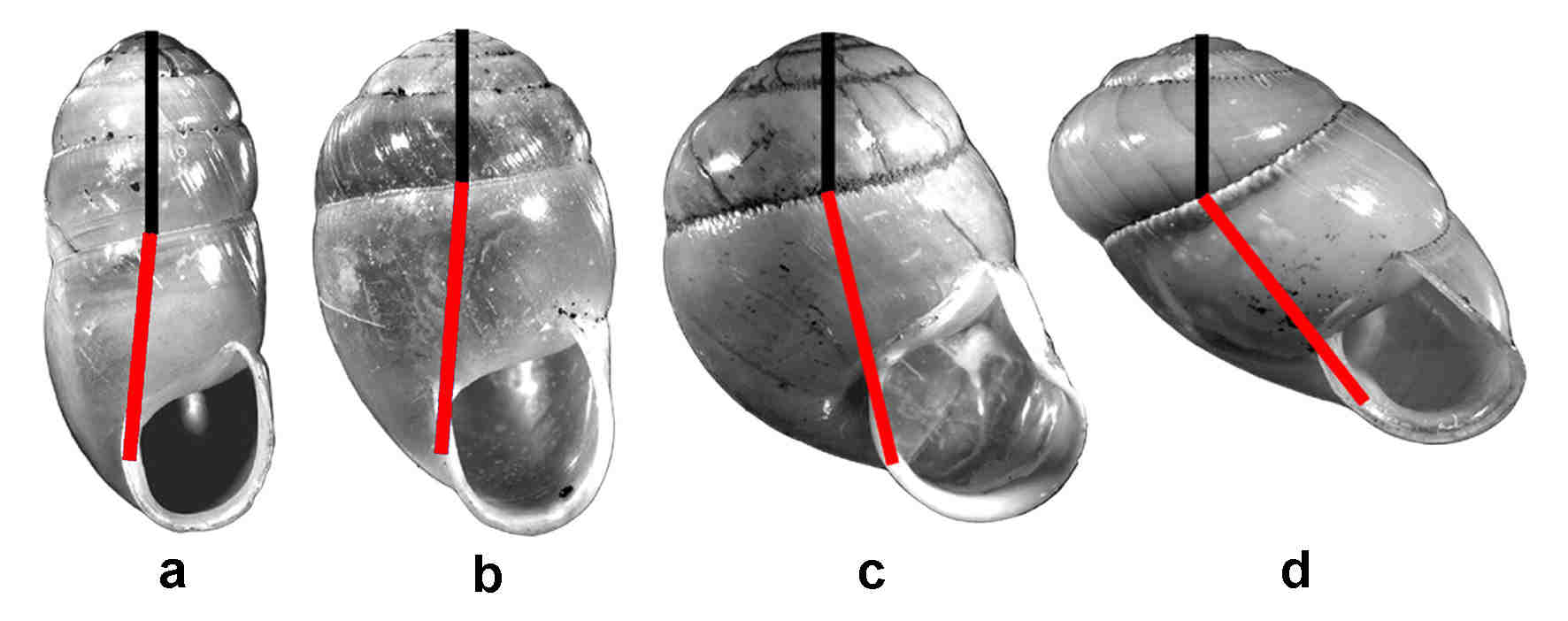

Streptaxomorph shells: an evaluation and possible explanation
Ben Rowson
Dept. Biodiversity & Systematic Biology, National Museum of
Wales, Cathays Park, Cardiff, UK CF10 3NP
Email: ben....@museumwales.ac.uk
My poster at the World
Congress of Malacology dealt with an aspect of shell form seen among
the Streptaxidae (Pulmonata: Stylommatophora). This work forms part
of my ongoing PhD on the systematics and diversity of the group,
based at the National Museum of Wales and Cardiff University.
A “streptaxomorph” shell form, in which the coiling
axis deviates substantially to the right during growth, is found
in many species of streptaxids (Fig. 1). Although occurring in a
few other isolated gastropod groups, it does not occur in any plausible
close relatives of the Streptaxidae. This raises two questions:
i) why does streptaxomorphy occur at all? and ii) has it arisen
many times, or been repeatedly lost after being inherited by all
streptaxids? My poster presented methods for describing the phenomenon
in morphometric terms, offers explanations for its occurrence, and
suggested a possible explanation for its evolution.
| Fig. 1. Four East
African streptaxid species, illustrating some of the range of form (not to scale). The coiling axis of the body whorl (red line) is deviated to the left in species a and b, and to the right in the streptaxomorph species c and d. |
 |
Preliminary data indicate that the vast majority of streptaxid species
are in fact axially deviated, either to the right (i.e., streptaxomorphy)
or to the left (as in columnar or barrel-shaped species). Streptaxomorph
shells are less frequent, but occupy a greater region of morphospace
than left-deviated ones, including a region exploited by few other
land snails (the “Cain gap” where height is approximately
equal to diameter; Cain, 1977). However, alternative and more appropriate
measurements indicate that this is misleading, with streptaxomorph
taxa avoiding the Cain gap by attaining a “streamlined”
narrow shell profile. In life this may confer greater freedom of
movement in the apertures of prey snails, and hence selective advantage.
Size and shape of the main raptorial and feeding organ, the buccal
mass, is also positively correlated with the degree of streptaxomorphy,
despite this organ showing remarkably weak allometry and considerable
conservatism across streptaxids in general. I suggest that selection
for a narrow shell and a large buccal mass marks out streptaxomorphy
as an ecological adaptation to dealing with large prey. As such
it is likely to have arisen repeatedly and homoplasy is to be expected
in systematic studies. This could explain the observation by taxonomists
(e.g. Schileyko, 2000) that streptaxomorph genera do not form a
natural group. My ongoing systematic work aims to address this and
other issues in a phylogenetic framework.
References
| Cain, A. J. 1977. Variation in the spire index of some coiled gastropod shells, and its evolutionary | |
| significance. Philosophical Transactions of the Royal Society of London B 277: 377-428. | |
| Schileyko, A. A. 2000. Treatise on Recent terrestrial pulmonate molluscs. Part 6: Rhytididae, | |
| Chlamydephoridae, Systrophiidae, Haplotrematidae, Streptaxidae, Spiraxidae, Oleacinidae, Testacellidae. Ruthenica Supplement 2, Moscow. | |